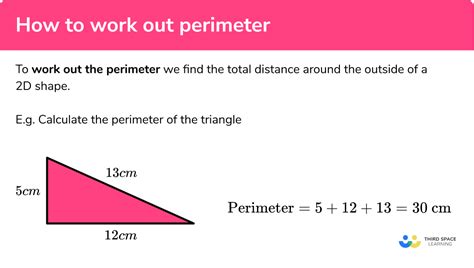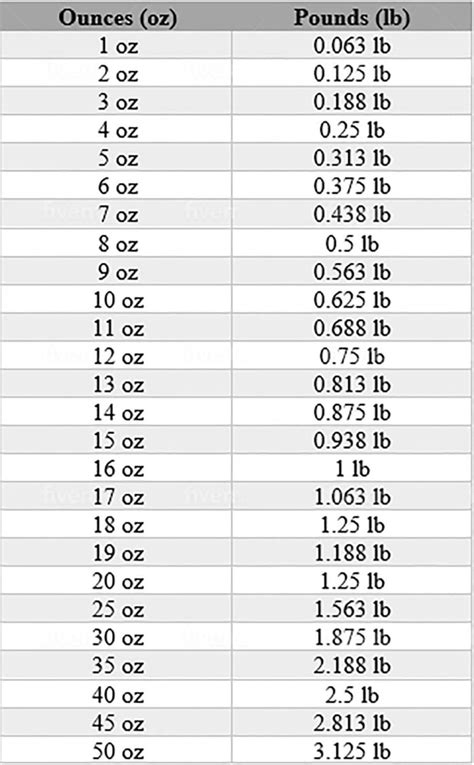Calculating the perimeter of a shape is a fundamental concept in geometry, essential for understanding the size and boundaries of various objects. The perimeter is the total distance around the edge of a shape, and it can be calculated using different methods depending on the type of shape. In this article, we will explore five ways to calculate the perimeter of various shapes, providing a comprehensive guide for students, professionals, and anyone interested in geometry.
Understanding Perimeter and Its Importance

The perimeter of a shape is crucial in real-world applications, such as architecture, engineering, and design. It helps in determining the amount of material needed to build or decorate a structure, like fencing a garden or framing a picture. The concept of perimeter is also vital in physics and mathematics, as it is used to calculate the area, volume, and other properties of shapes.
Key Points
- The perimeter is the total distance around the edge of a shape.
- It can be calculated using different methods depending on the type of shape.
- Understanding perimeter is crucial in real-world applications, such as architecture and engineering.
- The concept of perimeter is vital in physics and mathematics.
- Calculating perimeter helps in determining the amount of material needed for various projects.
Method 1: Calculating Perimeter of a Rectangle
A rectangle is a quadrilateral with four right angles and opposite sides of equal length. The perimeter of a rectangle can be calculated using the formula: Perimeter = 2(length + width). For example, if the length of a rectangle is 10 cm and the width is 5 cm, the perimeter would be 2(10 + 5) = 30 cm.
| Shape | Formula | Example |
|---|---|---|
| Rectangle | 2(length + width) | 2(10 + 5) = 30 cm |

Method 2: Calculating Perimeter of a Circle
A circle is a continuous curved shape with no corners or edges. The perimeter of a circle, also known as the circumference, can be calculated using the formula: Circumference = 2πr, where r is the radius of the circle. For example, if the radius of a circle is 4 cm, the circumference would be 2π(4) = 8π cm.
Method 3: Calculating Perimeter of a Triangle
A triangle is a polygon with three sides and three vertices. The perimeter of a triangle can be calculated by adding the lengths of all three sides. For example, if the lengths of a triangle’s sides are 5 cm, 6 cm, and 7 cm, the perimeter would be 5 + 6 + 7 = 18 cm.
Method 4: Calculating Perimeter of a Regular Polygon
A regular polygon is a shape with equal sides and equal angles. The perimeter of a regular polygon can be calculated by multiplying the length of one side by the number of sides. For example, if a regular hexagon has a side length of 6 cm, the perimeter would be 6 x 6 = 36 cm.
Method 5: Calculating Perimeter of an Irregular Shape
An irregular shape is a polygon with unequal sides and unequal angles. The perimeter of an irregular shape can be calculated by adding the lengths of all its sides. For example, if an irregular quadrilateral has side lengths of 5 cm, 6 cm, 7 cm, and 8 cm, the perimeter would be 5 + 6 + 7 + 8 = 26 cm.
In conclusion, calculating the perimeter of a shape is a straightforward process that requires understanding the type of shape and its properties. By using the formulas and methods outlined in this article, you can easily calculate the perimeter of various shapes, from simple rectangles and circles to complex irregular polygons.
What is the formula for calculating the perimeter of a rectangle?
+The formula for calculating the perimeter of a rectangle is Perimeter = 2(length + width).
How do you calculate the circumference of a circle?
+The circumference of a circle can be calculated using the formula: Circumference = 2πr, where r is the radius of the circle.
What is the difference between a regular and irregular polygon?
+A regular polygon has equal sides and equal angles, while an irregular polygon has unequal sides and unequal angles.
By mastering the art of calculating perimeters, you’ll gain a deeper understanding of geometry and its applications in various fields. Remember to practice calculating perimeters regularly to improve your problem-solving skills and become more confident in your mathematical abilities.



